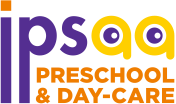Introduction:
In the digital age, where technology permeates every aspect of our lives, the realm of education stands no exception. Even in the early years of childhood, technology has become an indispensable tool for both educators and parents alike. Playschools, specifically designed to foster the holistic development of young minds, are now leveraging various technological advancements to enhance learning experiences.
The Role of Technology in Early Childhood Education:
Gone are the days when the sight of young children engrossed in books or traditional learning materials was the norm. Today, educational tablets, interactive whiteboards, educational apps, and digital storytelling tools have become prevalent fixtures in many playschools. These technologies offer a myriad of opportunities to engage and stimulate young learners in ways that traditional methods cannot.
Engagement and Interactive Learning:
Technology offers dynamic and interactive learning experiences that captivate the attention of young children. Educational apps and games are designed to be visually appealing, intuitive, and responsive, making learning fun and engaging. Through interactive activities, children develop essential cognitive skills such as problem-solving, critical thinking, and creativity.
Personalized Learning:
One of the most significant advantages of technology in early childhood education is its ability to cater to individual learning needs. Adaptive learning platforms can assess a child’s progress and tailor educational content accordingly. This personalized approach ensures that each child receives targeted instruction at their own pace, maximizing learning outcomes.
Multisensory Learning:
Technology facilitates multisensory learning experiences, allowing children to engage with content through auditory, visual, and tactile modalities. For example, touch-screen devices enable hands-on exploration, while audio-visual materials enhance comprehension and retention. By appealing to multiple senses, technology promotes deeper learning and understanding.
Challenges and Considerations:
While the integration of technology in early childhood education offers numerous benefits, it also presents certain challenges and considerations that educators and parents must address.
Screen Time Concerns:
A primary concern associated with technology use in playschools is the potential for excessive screen time. Prolonged exposure to screens at a young age may have adverse effects on children’s physical health and cognitive development. Therefore, it is essential to strike a balance between technology-based activities and other forms of play and exploration.
Quality of Content:
Not all digital content marketed for young children is created equal. Ensuring the quality and appropriateness of educational apps, games, and online resources is crucial. Educators and parents should vet digital content carefully, selecting materials that align with educational objectives and promote positive learning outcomes.
Equity and Access:
Disparities in access to technology and digital resources may exacerbate existing inequalities in early childhood education. Not all families have equal access to devices, internet connectivity, or tech-savvy environments. It is essential to consider issues of equity and inclusion when implementing technology in playschool settings, ensuring that all children have equitable access to educational opportunities.
Best Practices for Integrating Technology in Playschools:
To harness the full potential of technology in early childhood education while mitigating potential challenges, educators and parents can adopt the following best practices:
Purposeful Integration:
Integrate technology as a tool to enhance learning experiences rather than as a substitute for traditional teaching methods. Ensure that technology-based activities align with curriculum goals and promote active engagement and critical thinking skills.
Balanced Approach to Screen Time:
Establish guidelines for screen time that prioritize hands-on, experiential learning opportunities. Encourage a balance between screen-based activities, outdoor play, creative expression, and social interaction to support holistic development.
Professional Development for Educators:
Provide ongoing training and support for educators to effectively integrate technology into their teaching practices. Equip teachers with the necessary skills and knowledge to select, adapt, and evaluate digital resources and incorporate them into curriculum planning.
Conclusion
Incorporating technology in early childhood education holds immense potential for enriching learning experiences and preparing young children for the digital world. Playschools play a vital role in leveraging technology to foster cognitive, social, and emotional development in their students. By embracing best practices and addressing challenges thoughtfully, educators and parents can harness the power of technology to nurture the curious minds of tomorrow and lay a strong foundation for lifelong learning.

